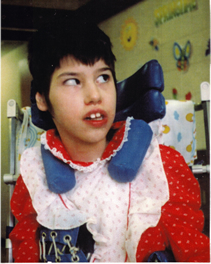Act Now

Empower U: Learn to Access Your Disability Rights Training on Canadian Human Rights, the Convention on the Rights of Persons with Disabilities (CRPD) and its Optional Protocol (OP) training aims to increase awareness of how to address discrimination using more familiar Canadian human rights laws such as Human Rights Codes and the newer international Convention on the Rights of Persons with Disabilities (CRPD). This is training for persons with disabilities by persons with disabilities. The training is part of a project funded by Employment and Social Development Canada and implemented by the Council of Canadians with Disabilities (CCD) in collaboration with Canadian Multicultural Disability Centre Inc. (CMDCI), Citizens With Disabilities – Ontario (CWDO), Manitoba League of Persons with Disabilities (MLPD) and National Educational Association of Disabled Students (NEADS). Read more.
Sign Up for our monthly digest
A monthly newsletter from CCD about what is happening in the community
Why Give to the Tracy Fund?
Related Documents
October 24, 2018
CCD to Launch Tracy Latimer Archives and Facebook Page
June 4, 2008
Tracy Latimer, the Victim; Robert Latimer, the Murderer
February 16, 2007
An Open Letter to Prime Minister Harper
[October 1997]
Tracy Latimer
Jim Nazar
Nancy B.
Sue Rodriguez
Ryan Wilkieson
Charles Blais
Andrea Halpin
Austin Bastable
Katie Lynn Baker
Ronald Lambert
All these people were killed because they had a disability. Won't you contribute to the Tracy Fund to help support CCD's efforts to protect the fundamental human rights of people with disabilities.
Support the Tracy Fund
CCD Council established the Tracy Fund to promote the fundamental human rights of persons with disabilities. In recent years, CCD has undertaken the following activities in support of the fundamental human rights of persons with disability:
In January 1995, CCD and the Saskatchewan Voice won intervenor status in Robert Latimer's appeal of his second degree murder conviction.
On 23 February 1995, CCD explained to the Saskatchewan Court of Appeal why it would be discriminatory for Latimer to receive a reduced sentence.
In February 1996, the CCD Council agreed to seek a publisher for a book commemorating the Tracy Latimer Vigils.
In October 1996, CCD began the Latimer Watch to educate the community about the need to protect the fundamental human rights of people with disabilities and it has used the publication to record the histories of people with disabilities who are killed as a result of their disabilities.
30 October 1996 the CCD Latimer Watch covered the Katie Lynn Baker case. Katie Lynn, a 10 year old with Rett Syndrome, starved to death and her mother claimed that Katie Lynn wanted to die.
On 13 November 1996, the CCD Latimer Watch covered the Charles Blais case. Danielle Blais drowned her son Charles, 6, in a bathtub. Charles had autism.
On the 20 November 1996, Eric Norman, Chairperson of CCD, circulated an open letter to Canadians seeking support of CCD's position that the murder of a person with a disability is treated the same as any other murder.
On 21 November 1996, CCD informed its network about the Andrea Halpin, a 35 year old woman labeled mentally handicapped, who was murdered by her father, who then killed himself.
On 27 November 1996, CCD representatives were present in the Supreme Court of Canada when the Latimer case was heard and were available to present our perspective to the media.
20 December 1996, CCD spoke out publicly against Senator Sharon Carstairs' Bill S-13 (an Act to amend the Criminal Code, Protection of Health Care Workers) and the Liberal Party of Canada resolution to decriminalize doctor assisted suicide. CCD has also written directly to Senator Dan Hays President of the Liberal Party and to Senator Carstairs on these matters.
On 24 January 1997, CCD provided coverage of the Ronald Lambert case. Ronald Leonard Brown was sentenced to jail for the death of Ronald Lambert which had occurred 19 years ago. Despite several confessions no one took Brown seriously until 1995. Ronald Lambert was 11 when he was killed and had mental and physical disabilities. Brown was a nurse's aid in the institution where Lambert lived.
On 6 February 1997, Irene Feika, representing the Council of Canadians with Disabilities, and Peter Park and Vici Clark, representing People First, were present in the Supreme Court of Canada when the decision in the Latimer Case was released.
On 7 February 1997, the Globe and Mail carried comments by CCD representatives about the Supreme Court decision in the Latimer case. "There has to be some direct consequences for Robert Latimer and some direct justice for Tracy," said CCD Human Rights Committee member Catherine Frazee.
On 9 February 1997, Irene Feika, a past CCD Chairperson appeared on Sunday Edition to discuss with Mike Duffy the Latimer Case and present a disability analysis of the events in the case.
May-June 1997, CCD Council prioritized assisted suicide as an election issue and questioned all party leaders about their position on assisted suicide. CCD highlighted this issue in its Election Monitor.
To continue this work make a contribution to the Tracy Fund. Send your cheques, payable to the Council of Canadians with Disabilities (CCD), to the following address:
The Tracy Fund
CCD
926-294 Portage Avenue
Winnipeg, MB
R3C 0B9
Donors receive tax deductible charitable receipts.

Tracy Latimer
The Latimer Case
The Latimer case directly concerned the rights of persons with disabilities. Mr. Latimer's view was that a parent has the right to kill a child with a disability if that parent decides the child's quality of life no longer warrants its continuation. CCD explained to the court and to the public how that view threatens the lives of people with disabilities and is deeply offensive to fundamental constitutional values. Learn more.
